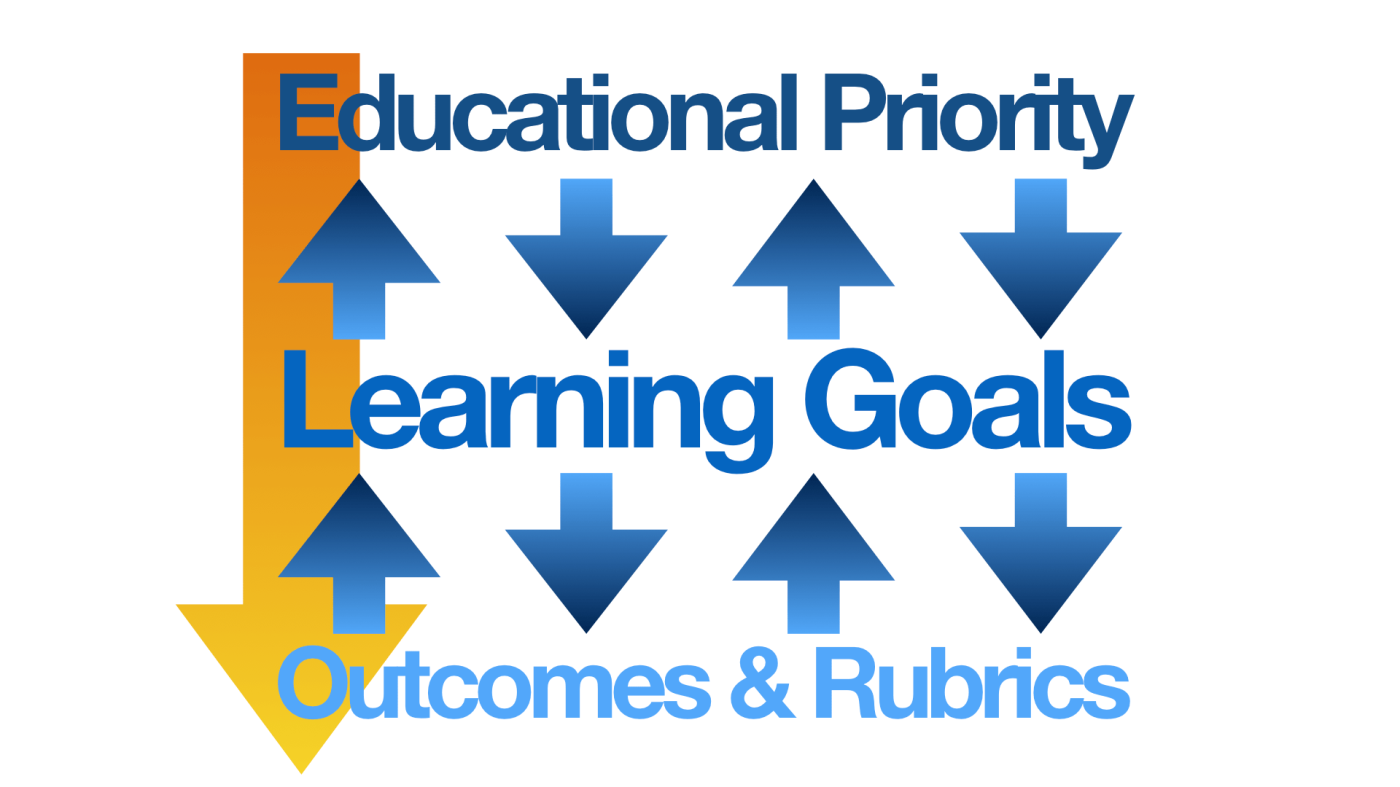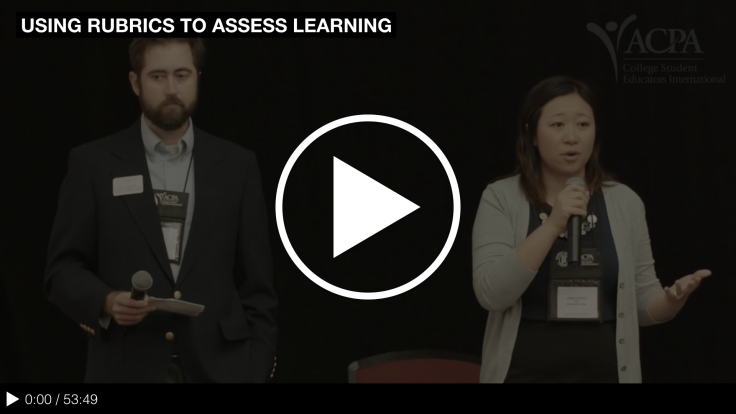An important element of developing residential curriculum involves scaffolding and sequencing learning. Rubrics, or tools developed for the purposes of scoring and rating development along a scale, can be useful in this scaffolding and sequencing process. As discussed earlier, residential curriculum rubrics break down learning outcomes into successive stages of development and mastery. Although coming after the development of an educational priority, goals, and outcomes, rubric development is often an iterative and reciprocal process that requires one to loop back and revise goals and outcomes in light of knowledge gained thorough the rubric creation process.
The process is iterative, because as one begins to identify key behaviors and concepts, these concepts can be re-categorized as the desired learning is better understood. In other words, the development of these learning statements often requires cycling back through them multiple times. In this sense, the process is also reciprocal. Although generally starting at the broadest level (that of the educational priority) and working towards the more specific (learning outcomes and rubrics). Reflecting back and forth across the various levels of your curriculum can help yield insights into the whole. At its most basic level, it is important to understand that the development of your learning cascade is not linear, but cyclical.
The following video from ACPA’s Residential Curriculum Institute provides training in rubrics and reburial development, complete with examples from Clemson University and Macalester College. It provides staff members with a broad overview as to the purpose of rubrics and some suggestions about their creation.

